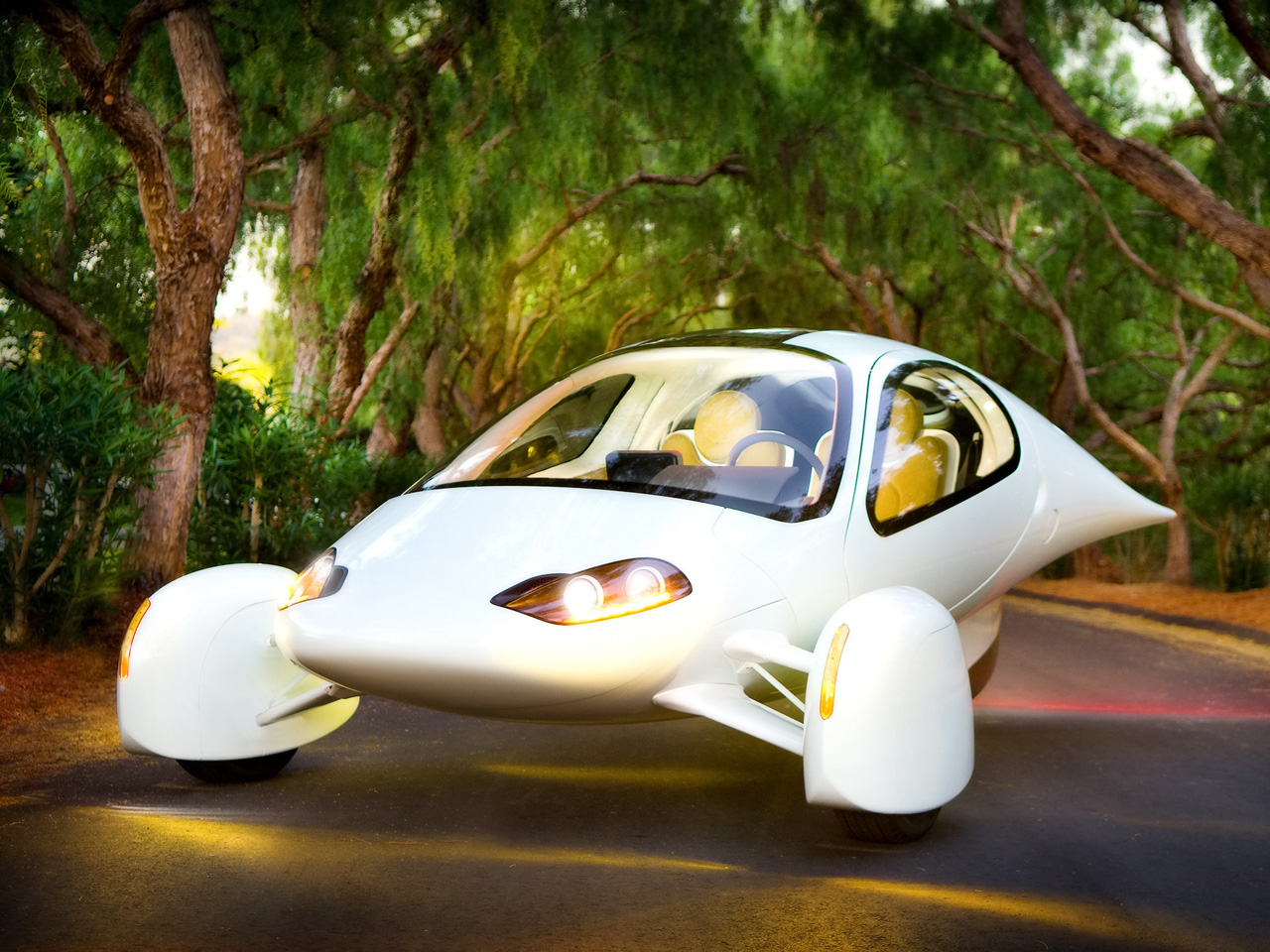2008 Aptera Typ 1
|
Price |
approximately $29,900 |
Production |
-- | ||
|
Engine |
electric & gasoline hybrid |
Weight |
-- | ||
|
Aspiration |
-- |
Torque |
-- | ||
|
HP |
-- |
HP/Weight |
-- | ||
|
HP/Liter |
-- |
1/4 mile |
-- | ||
|
0-62 mph |
-- |
Top Speed |
-- |
(from Aptera Press Release) The Aptera was designed from the ground up as an electric vehicle, and later as an extended range electric vehicle. After building the proof-of-concept Mk-0, we hired the automotive design firm, 'eleven', to help us further develop the concept vehicle. The 'eleven' team, led by Jason Hill and Nathan Armstrong, made great strides in the development of the Aptera's body styling, interior design, and structural engineering. Meanwhile, we refined the Aptera's shape to maximize efficiency using CFD (Computational Fluid Dynamics), developed and built advanced suspension and drivetrain components, and integrated a strong yet lightweight composite shell. Our entire process has been developed in-house exclusively by Aptera for the Aptera Typ-1. Our structural elements have undergone countless revisions of FEA (Finite Element Analysis) to be lightweight, robust, and manufacturable.
Based on our wheel layout and our weight, the Aptera Typ-1 is registered as a motorcyle.
In fact, Aptera is a motorcycle manufacturer registered with DOT and CA DMV. This means, among other things, that we are able to issue VIN's. Our 'world identifier number' is '5WT', so all of our VIN's begin with '5WT'. Knowing the public perception of motorcycle safety, we made the decision to make safety a fundamental part of the design of our vehicles. For example, the Typ-1 roof is designed to EXCEED rollover strength requirements spelled out in FMVss 216 for passenger vehicles. The doors EXCEED the strength requirement spelled out in FMVss 214. We decided not just to meet many of the specs for passenger vehicles, which are set above and beyond the requirements for motorcycles, but we chose to exceed them whenever possible. Just a few of the many parts of the safety systems on the Typ-1 are airbag-in seatbelt technology, a front subframe and a firewall that redirect energy around the occupants.
Electric & Gasoline Hybrid
The Typ-1 uses a
commoditized, 'ruggedized' 3-phase motor controller designed for
vehicular applications, and a 3-phase motor made for us by a company
here in Southern California. The rear drive suspension, and the
drive reduction, are all designed and made by Aptera. Since the
Typ-1e (electric) and the Typ-1h (series plug in hybrid) have
different battery needs, this may result in different battery
manufacturers for the two models. The Typ-1e is designed to use a 10
KWh pack, while the Typ-1h uses a smaller pack. The cycles and DOD
are different for both applications. We will announce further
information regarding the battery lifespan and warranty policy well
before we begin manufacturing the Typ-1 next October.
Diesel or Gasoline? Our first prototype, the Mk-0, was a parallel
hybrid Diesel and achieved an average of 230 MPG at a steady state
of 55 MPH. This was pure Diesel/mechanical drive with no electric
assist. Diesel is attractive for its Carnot efficiency and the
increased enthalpy of Diesel fuel vs gasoline. However, diesel
contains lots of unburned hydrocarbons and NOX compounds, and it's
impossible to get a small Diesel engine certified for emissions in
California. Therefore, the typ-h uses a small, water-cooled EFI
Gasoline engine with closed loop oxygen feedback and catalytic
converter. This engine is coupled to a lightweight 12KW
starter/generator. It's very clean and quiet.
The real deal about Aptera's Mileage
With the All Electric
Aptera, it is very easy to figure out the mileage range. The mileage
is determined by the distance you can drive, under normal
circumstances, until the batteries are effectively drained. In the
case of the first Aptera typ-1e, we have calculated the range to be
about 120miles.
With the Plug-in Electric Hybrid version of the Aptera(typ-1h) the
mileage of the vehicle is difficult to describe with one number. For
example, the Typ-1h can drive 40 to 60 miles on electric power
alone. Perhaps for such a trip, the engine may only be duty-cycled
for a few seconds or minutes. This would produce a fantastic number,
an incredible number that, though factually true, would have no
useful context, i.e. it's just a point on a graph.
An asymptotic decaying exponential is an accurate way to describe
the fuel mileage of the Typ-1h. For example driving say, 50 miles,
one might calculate a MPG number that's 2 or 3 times higher, say,
1000 MPG. As battery energy is depleted, the frequency of the engine
duty cycle is increased. More fuel is used. at 75 miles, the MPG
might be closer to 400 MPG. Again, we're using battery energy
mostly, but turning the engine on more and more. Just over 100 miles
we're just over 300 MPG, and just beyond 120 miles, we're around 300
MPG.
So why pick a number at 120 miles? Well, it's more than double of
most available plug-in hybrid ranges that achieve over 100 MPG. It's
three times the distance of the typical American daily commute. It's
a meaningful distance that represents the driving needs of 99% of
Americans on a daily basis. Sure, it's asymptotic, after 350-400
miles it eventually plummets to around 130 MPG at highway speeds
where it will stay all day until you plug it back in and charge it
up.



